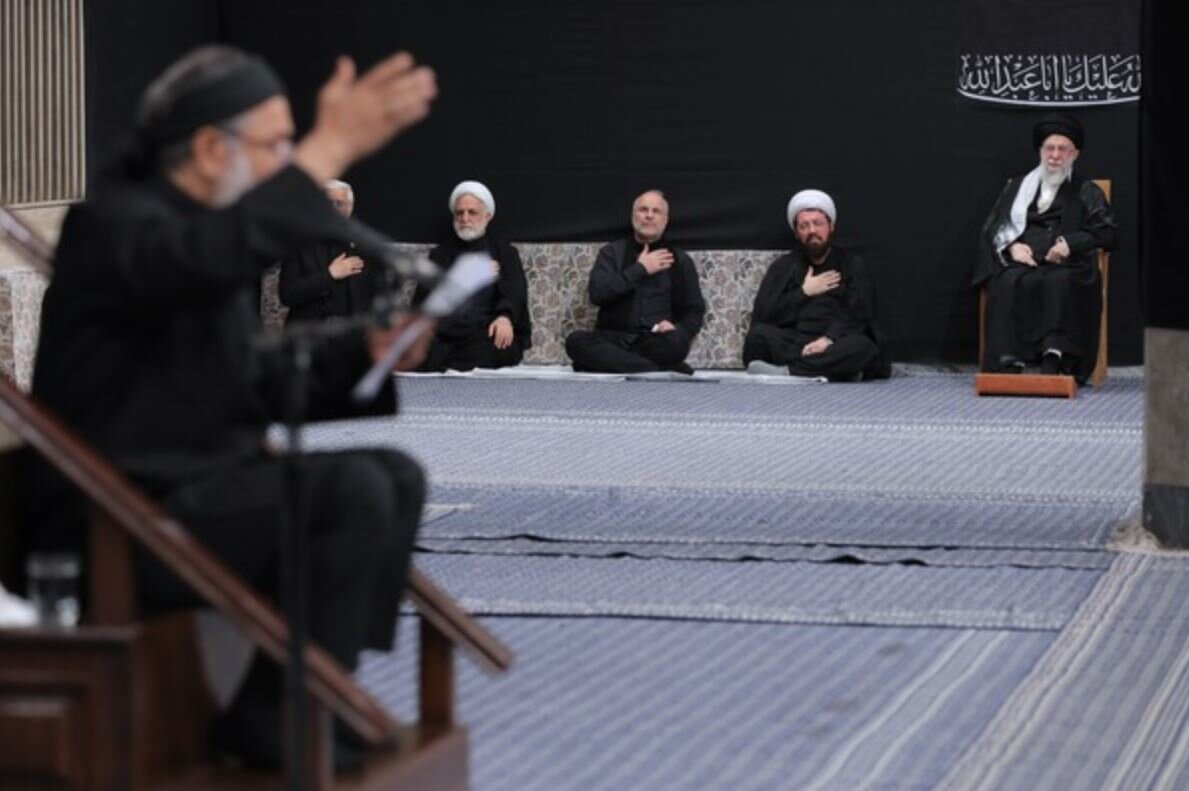Leader blurs lines between faith and nation with ‘Ey Iran’ performance

TEHRAN – Following the global circulation of footage showing the presence of Leader of the Islamic Revolution Ayatollah Seyyed Ali Khamenei at a mourning ceremony on the eve of Ashura, one video has specifically drawn public attention in Iran. In it, the Leader is seen requesting one of the eulogists to perform the patriotic anthem "Ey Iran" during the ritual gathering.
The story begins with the fact that "Ey Iran," sung by the renowned Iranian vocalist Mohammad Nouri, has ranked among the top five most beloved musical works with patriotic content for the Iranian public since its release in 1981.
On the other hand, in religious rituals commemorating Ashura, performers known as "noheh-saras" (religious eulogists) usually sing elegiac poetry mourning the martyrdom of Imam Hussein and his 72 companions, typically without melodic instruments, and relying only on percussive ones like drums and cymbals.
Thus, it is traditionally assumed—especially by a small fringe on both extremes of the secular or religious spectrum—that not only are these two distinct musical styles, but they represent two divergent worldviews: one nationalist, the other religious.
It is from this point that the remarkable nature of the recent video begins to take shape. It appears that Ayatollah Khamenei, as a Shi'a religious authority, has requested a performance of a nationalist song within a religious ritual. But the story does not end here, because such a dichotomy or contradiction has never existed in his worldview.
An older video from the frontlines of the Iran–Iraq war in 1980 shows him responding to a soldier who asks whether one should fight for Iran or for Islam. With a tone that reflects the spontaneity of his thinking, he asserts clearly that Iran and Islam today are a single, unified reality. “You cannot defend Iran without fighting for Islam, and you cannot protect the borders of Islam without raising the flag of Iran.”
Thus, this integrated approach to the concepts of Iran and Islam has existed in Ayatollah Khamenei’s thought for at least 45 years. What we see today is merely its extension into tangible forms—such as music.
Now Mahmoud Karimi, one of Iran’s most prominent religious eulogists, using the exact same melody with only slight, intentional modifications to the lyrics (so as to preserve the nationalistic undertone of the original), offers a new expression of this conceptual unity between Iran and Islam.
This performance, which had already been warmly received by the public even before the Ashura ceremony, has now—fully aligned with the Leader’s long-held stance against any dichotomy between religion and nationhood—become a new symbol of unity. It reflects a convergence between the people and the man who is, at once, both the religious authority of the Shi’a and the most powerful guardian of Iran.
Leave a Comment